Russian Airstrikes in Syria: February 29 - March 15, 2016
March 17, 2016 - Genevieve Casagrande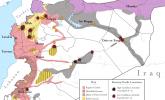

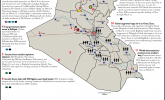
ISIS reportedly withdrew its forces from Hit District, west of Ramadi, ISIS’s rst reported withdrawal from a major urban center in Iraq. Between March 8 and March 14, security forces west of Ramadi have made rapid progress in recapturing villages from ISIS and are reportedly less than seven miles from Hit District’s southern perimeter.

ISIS’s messaging is incredibly effective, largely due to its strategic emphasis on hybridized digital warfare. The organization fully coordinates its military and messaging campaigns with the support of a robust media bureaucracy.
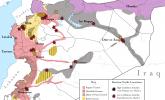

The Institute for the Study of War (ISW) and AEI's Critical Threats Project conducted a multi-week planning exercise to develop potential courses of action that the United States could pursue to destroy ISIS and al Qaeda in Iraq and Syria. The first two reports were released in January and media coverage is detailed below.
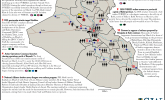
Iranian-backed Iraqi Shi’a militias spearheaded major operations to recapture desert terrain west of Samarra and Tikrit in Salah al-Din Province. The operation, announced and initiated by the Joint Operations Command on March 4, involves the Iraqi Security Forces (ISF) and Popular Mobilization, and aims to secure the Jazeera desert area northwest of Baghdad and prevent its use by ISIS as a support zone.

Syrian President Bashar al-Assad and his allies in Moscow and Tehran are continuing to complete the encirclement of Aleppo City despite an ostensible ‘cessation of hostilities’ that began on February 27, 2016. Russia resumed its air campaign against the opposition on February 28 following a one day hiatus, concentrating its strikes against the opposition-held northwestern suburbs of Aleppo City.
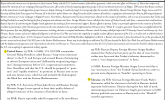
Russia redirected criticism over its operations in Syria toward Turkey with the U.S.-backed cessation of hostilities agreement, which came into effect on February 27. Russia has temporarily reduced the intensity of its air campaign following February 27, after weeks of heavily targeting opposition groups in Syria’s northwestern province of Aleppo.
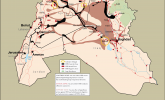
Since the publication of ISW’s last ISIS Sanctuary Map on January 16, 2016, ISIS lost a major resource hub in Shaddadi, northeastern Syria and was expelled from its remaining positions in Ramadi, western Iraq. ISIS responded by launching a campaign against Kurdish forces in Tel Abyad, northern Syria, and briefly seizing the city of Khanaser, southeast of Aleppo from Syrian regime forces.
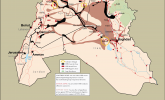
Since the publication of ISW’s last ISIS Sanctuary Map on January 16, 2016, ISIS lost a major resource hub in Shaddadi, northeastern Syria and was expelled from its remaining positions in Ramadi, western Iraq. ISIS responded by launching a campaign against Kurdish forces in Tel Abyad, northern Syria, and briefly seizing the city of Khanaser, southeast of Aleppo from Syrian regime forces.